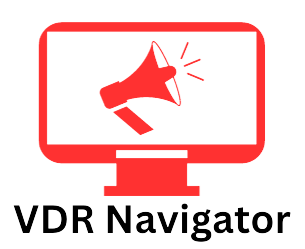The definitive guide to virtual data rooms is here to help. Data management solutions that are efficient and safe are a continual need for organizations and enterprises in today’s lightning-fast digital world. To address this, virtual data rooms (VDRs) provide an all-inclusive answer for safe document archiving, sharing, and teamwork. Here, we’ll go over the basics of virtual data rooms, including what they are, why they’re useful, what features to look for, and how to pick the best one for your business.

A Virtual Data Room: What Is It?
Financial transactions, legal proceedings, mergers, and acquisitions are some of the most common uses for virtual data rooms, which are safe online repositories for storing and sharing sensitive information. Authorized users may safely access, examine, and collaborate on documents in these rooms without worrying about data integrity. The capacity of virtual data repositories (VDRs) to improve security, expedite operations, and enable effective cooperation among stakeholders has led to their rising popularity.
Reasons for Using Virtual Data Rooms
You need to improve your data management methods to succeed in today’s data-driven business world.
- Strengthened Protection
The increased security of virtual data rooms is a major selling point for many enterprises. Video disc reuse (VDR) systems use cutting-edge security measures, including encryption, MFA, and dynamic watermarks, which set them apart from conventional file-sharing techniques. These precautions are in place to guarantee the security of sensitive data and prevent its disclosure or alteration.
- Efficient Teamwork
Working together is fundamental to running a successful company. Teams may work together efficiently in virtual data rooms, whether across town or halfway across the world. Collaboration becomes more effective and fruitful with the help of features like activity monitoring, version control, and real-time updates.
3: Auditing and Compliance
Virtual data rooms are indispensable in sectors like healthcare and banking, where strict adherence to regulations is paramount. They give a thorough audit trail for all platform activity and help firms comply with industry requirements. This streamlines the auditing process while simultaneously guaranteeing openness.
Essential Elements of Electronic Data Rooms
- Managing Documents
The foundation of virtual data rooms is efficient document management. Users can safely upload documents while also organizing and categorizing them. Thanks to version control features, everybody is always working off the most up-to-date and correct version of the data.
- Granular Permissions
Users can have fine-grained control over their permissions with VDRs. Only authorized users will have access to critical material by allowing administrators to set permission levels. This makes it so that only authorized individuals may access sensitive data, which aids in preventing data breaches.
- Collaboration and Question Tools
Question-and-answer tools are a common feature of virtual data rooms, which helps simplify communication and cooperation. The platform allows users to ask questions and keep track of replies, making it a great place to have all project-related conversations in one place.
Selecting an Appropriate Online Data Warehouse
Prioritize security aspects, ensure the interface is user-friendly, and evaluate your organization’s needs before adopting a virtual data room into your workflow.
- Identify What You Require First
Determine what your company needs from a virtual data room before you dive into the vendor pool. Think about how many people are on your team, the nature of your projects, and how secure you need to be. You may use the results of this preliminary assessment to choose a VDR that meets your specific needs.
- Protection Mechanisms
Choosing a virtual data room that prioritizes security is essential. Keep an eye out for fully adjustable access restrictions, multi-factor authentication, and end-to-end encryption. The security of your data and the availability of functionality that meets industry requirements should be your top priorities when choosing a VDR provider.
- Interface that is Easy to Use
To ensure broad acceptance in your business, a user-friendly interface is essential. To make the most of your team’s time learning how to use the virtual data room, choose a user-friendly and straightforward one. Your current workflows will be more easily integrated as a result of this.

A Complete Manual for Making the Changeover to Virtual Data Rooms
Now that we’ve covered the basics of virtual data rooms let’s dive into how your business may move to and establish one.
- Determine Who May Have a Stake
It would be best to start by establishing a list of all the important people in your company who have a stake in the decision-making and execution processes. This could encompass project managers, legal teams, and information technology specialists.
- Organize And Lead Educational Sessions
Ensure everything goes off without a hitch by providing in-depth training to everyone using the virtual data room. Get them to speed on the platform’s capabilities, security measures, and teamwork resources.
- See What Happens
Before committing entirely, it is advisable to look into trial periods with potential virtual data room providers. This way, your team can try the platform and see if it works for your needs and process.
In Summary of Guide to Virtual Data Rooms
Organizations looking for effective and safe data management solutions will find a virtual data room to be a game-changer when well implemented. The advantages of VDRs are numerous and significant, ranging from improved security to simplified cooperation. Prioritize security aspects, ensure the interface is user-friendly, and evaluate your organization’s needs before adopting a virtual data room into your workflow.
In this detailed guide, we have covered all you need to know about virtual data rooms, including why they are important, what features they offer, and how to choose the best one for your company. You need to improve your data management methods to succeed in today’s data-driven business world. A virtual data room is the way to go.
FAQs: Guide to Virtual Data Rooms
Visit our Frequently Asked Questions page for solutions to your inquiries! Details that have been hand-picked to address your issues efficiently.
Q1: What is a Virtual Data Room, and how does it differ from traditional file-sharing methods?
A1: A virtual data room (VDR) protects important information like a digital castle. Particularly in high-stakes situations like mergers and acquisitions, virtual data rooms (VDRs) offer a safe online area to store, exchange, and discuss documents, unlike conventional file-sharing. It’s as if your data had its own VIP lounge.
Q2: Why should my business consider using a Virtual Data Room? What are the real benefits?
Answer 2: Virtual data rooms may help you stay compliant, improve security, and ease communication. The potential of a VDR is like having a safe where only authorized individuals may enter, make changes to, and talk about important papers.
Q3: How do Virtual Data Rooms ensure the security of my sensitive information?
A3: Envision this: Our Virtual Data Room security measures include dynamic watermarks, multi-factor authentication, and military-grade encryption. Combined, they form an impenetrable barrier around your data, limiting access to only authorized individuals.
Q4: Can a Virtual Data Room replace face-to-face collaboration in the business world?
Answer 4: Improving is more important than replacing. Teams across town or the world may work together in real time in a virtual data room, similar to a virtual boardroom. It’s the cutting edge of bringing minds together without breaking the bank on travel.
Q5: How do I know if my organization needs a Virtual Data Room, and what should I look for when choosing one?
A5: Evaluate your requirements first. An organization’s use of a VDR becomes more advantageous when dealing with sensitive data, legal transactions, or mergers and acquisitions (M&A). Prioritize a supplier that meets your specific needs, has an intuitive interface, and robust security measures when selecting.
Q6: Are Virtual Data Rooms only for big corporations, or can small businesses benefit from them too?
Answer 6: Virtual data rooms are universally sized, much like customized clothing. Safe data storage and sharing advantages apply to all types of businesses, from startups to Fortune 500 companies. Without emptying their bank accounts, small enterprises may experience the same degree of safety and effectiveness.

